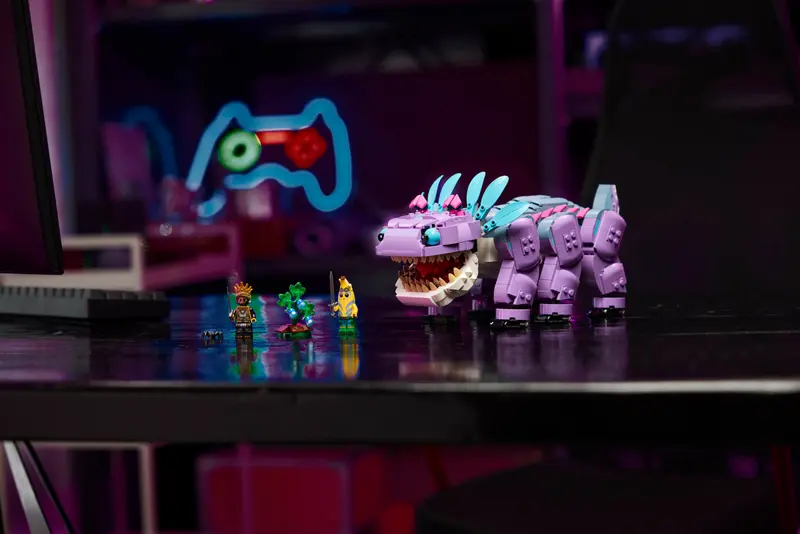LEGO Leonardo Da Vinci’s Flying Machine
LEGO Leonardo Da Vinci’s Flying Machine released on the 1st January 2025 into the LEGO Icons range. The LEGO Icons series has given us some amazing sets over the years, and I am especially excited about some of the rumoured sets for 2025 from Lord of the Rings, Star Trek and How to Train Your Dragon (one of my cats looks just like Toothless!)
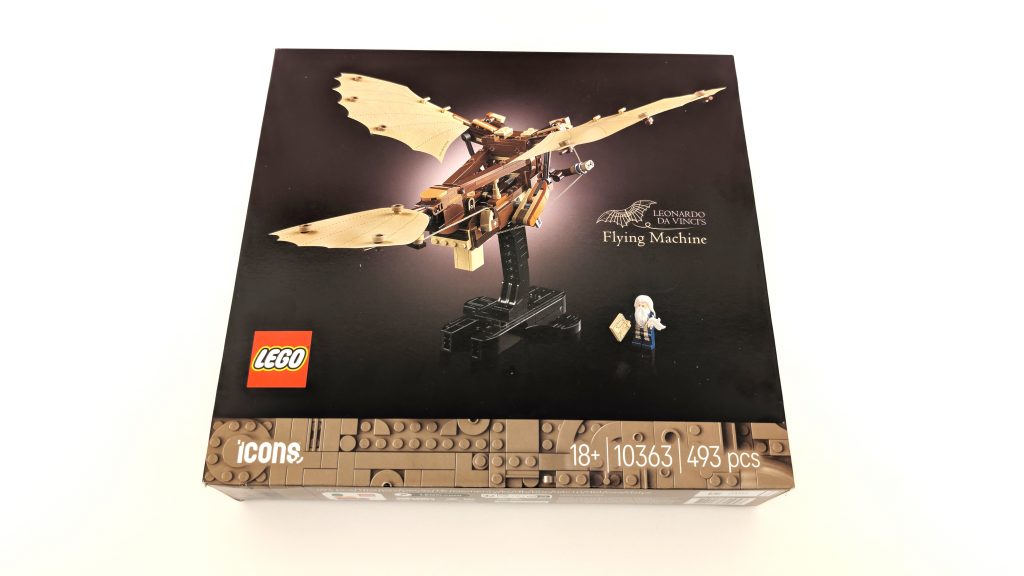
With a retail price of £54.99/$49.99/€59.99 and a piece count of just 493, LEGO Icons set LEGO Leonardo Da Vinci’s Flying Machine 10363 has the highest price per piece (PPP) of any of the sets in the series to date, but is it worth the money?
Table of Contents
What’s in the Box
The LEGO Leonardo Da Vinci’s Flying Machine packaging comes in the usual “LEGO Icons” black and holds four bags of parts as well as the instruction book, with a great image of the product on the cover. The box contains a small brown envelope for the three wing pieces (left, right and tail), all of which are unique to the LEGO Leonardo Da Vinci’s Flying Machine (Ornithopter) set.
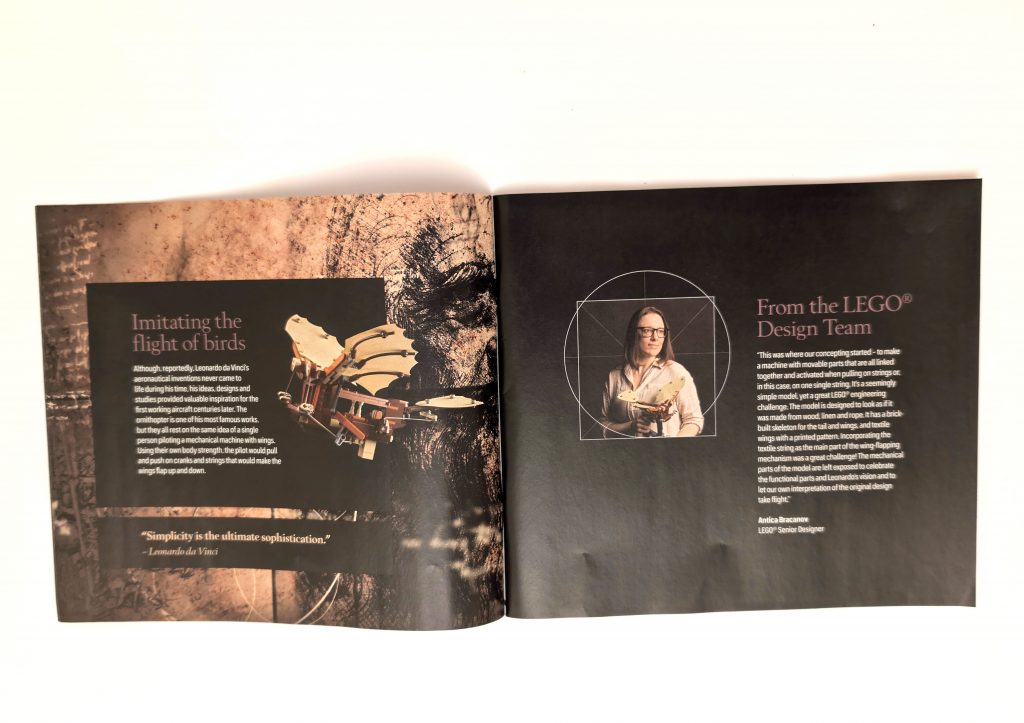
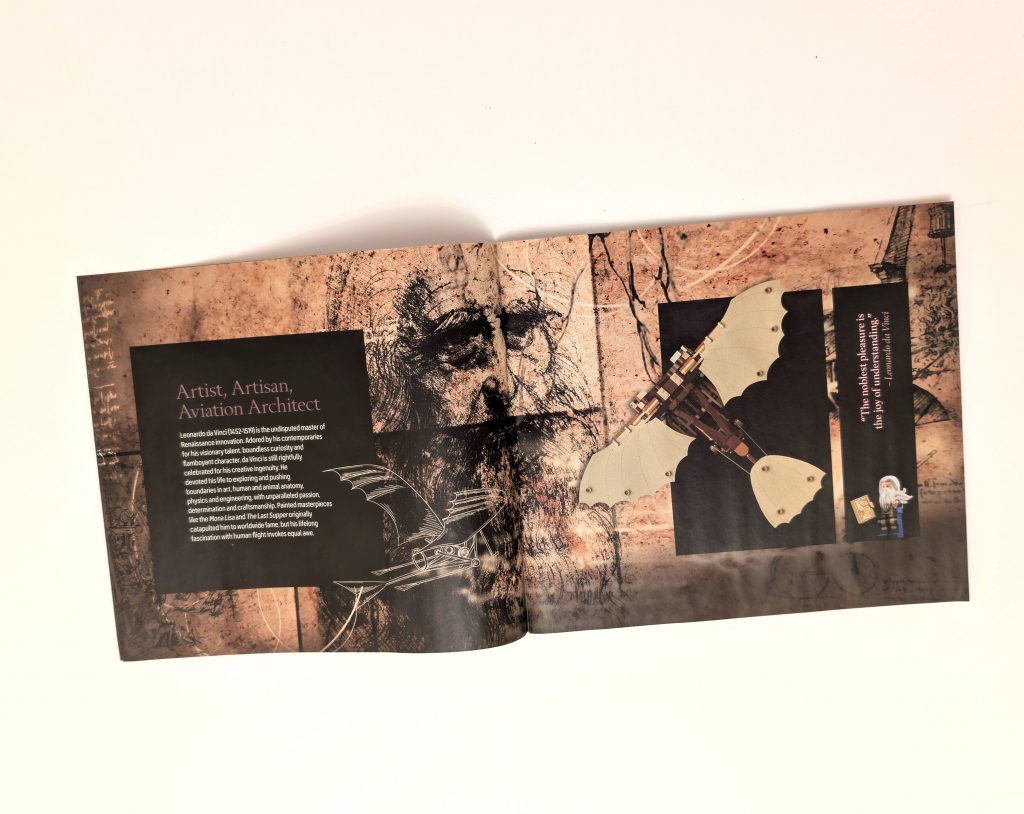
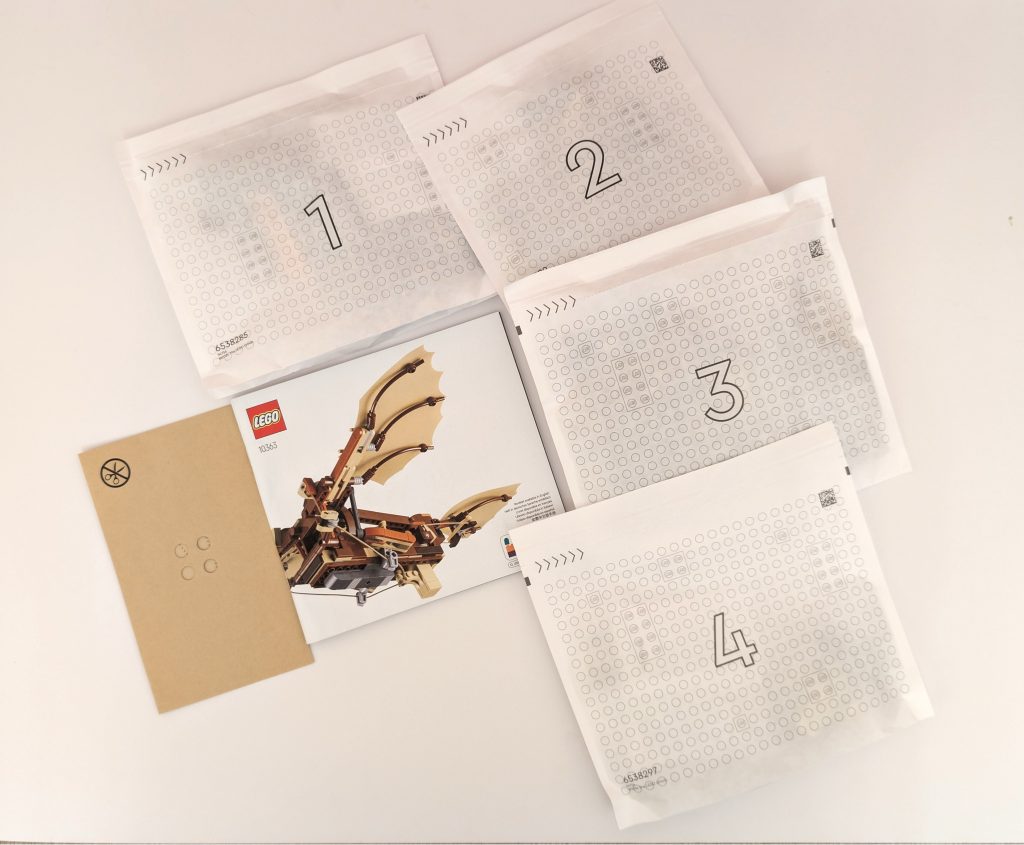
The instruction manual is well-presented, featuring some of da Vinci’s illustrations and his self-portrait and some information about the man himself, the flying machine and the set designer Antica Bracanov. Bracanov has worked on many cool sets, including 21330: Home Alone and 10333: The Lord of the Rings: Barad-dûr.
“Simplicity is the ultimate sophistication” (Leonardo da Vinci)
Within the 493 total parts, LEGO Leonardo Da Vinci’s Flying Machine includes an impressive 6 uniquely coloured parts (detailed at the end of this review), plus two printed parts, an original Minifigure and the three wings only found in this set. These wings are the key driver for the high PPP of this set, since fabric parts often command a premium price, especially when they are also printed.
Building LEGO Leonardo‘s Da Vinci’s Flying Machine
The LEGO Leonardo Da Vinci’s Flying Machine build starts with the base, as you would expect, and follows the standard process of other flying display sets that you might already be familiar with, for example 75375: Millennium Falcon. It comes together nicely, with a specific area for the Minifigure to stand on later.
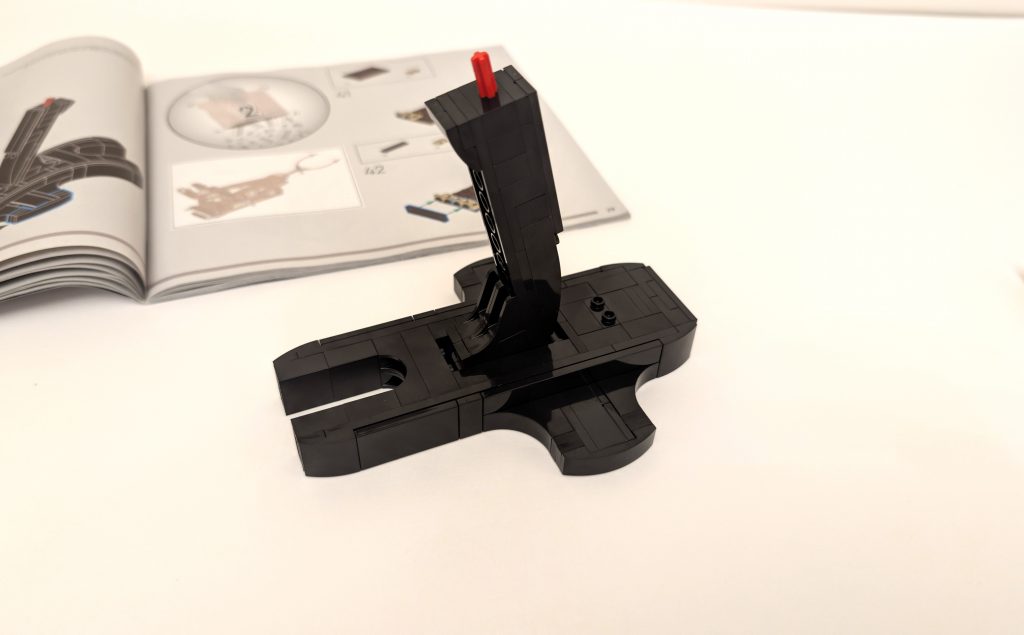
One small bugbear for me is that there are a few examples of bad part usage of plates. Steps 14 and 15, for example, uses a 4×4 brick upon two 2×2 plates, which could easily have been replaced with a 4×2 plate. Similarly, later in the build at step 43, two 1×2 plates are placed next to each other, when a 2×2 plate would have done the job. Perhaps this is a bit nit-picky, but I think that Leonardo would have agreed with me!
Some of the new coloured parts are in Bag 2, including a reddish brown and tan shock absorber, tan strings (10L), reddish brown lift arm extension and reddish brown curved bars, which I can definitely see forming the basis of some MOC trees in the future.

Using the parts in bag 3, we set about building the body of the flying machine and, by the end, most of the frame is together, including the wishbone tail and the start of the moving mechanism. Then, Bag 4 creates the final sections of the flying machine including the wings and last elements required for movement. The mechanism is so smooth that it feels almost organic, something I am very impressed by.
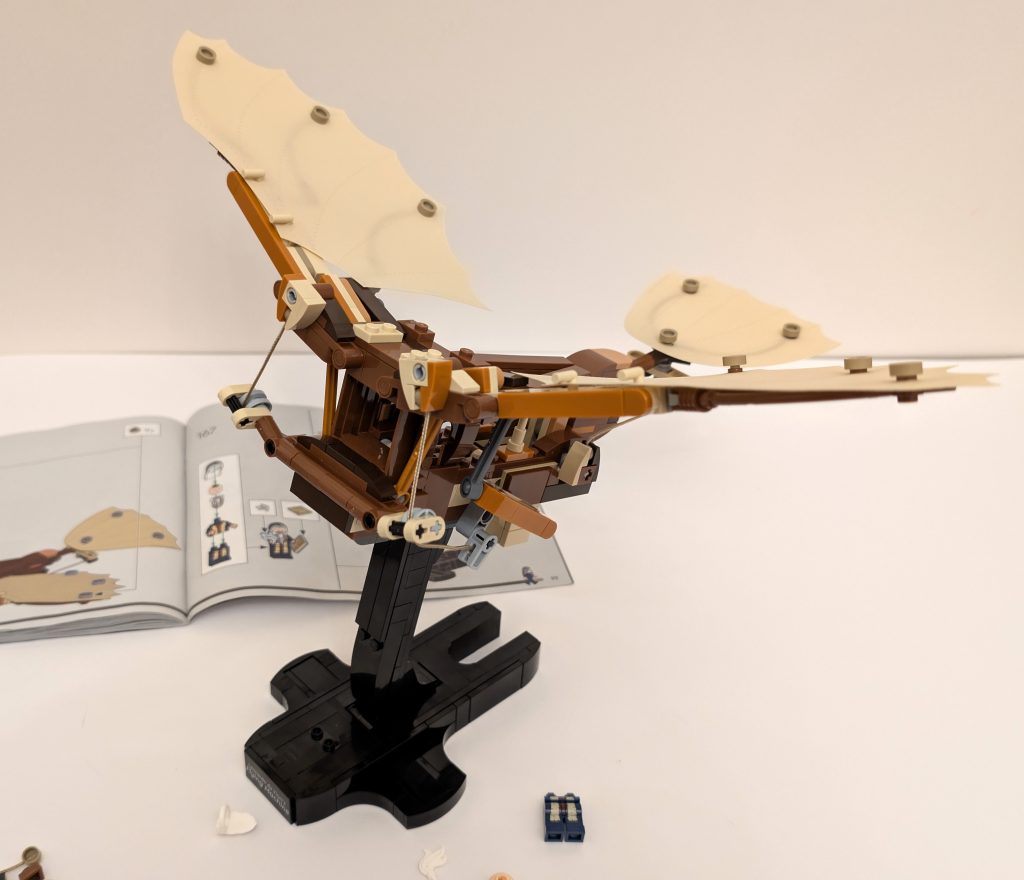
The final step is to build the Leonardo da Vinci Minifigure, giving him a fun, printed tile of a sketch and a quill pen.
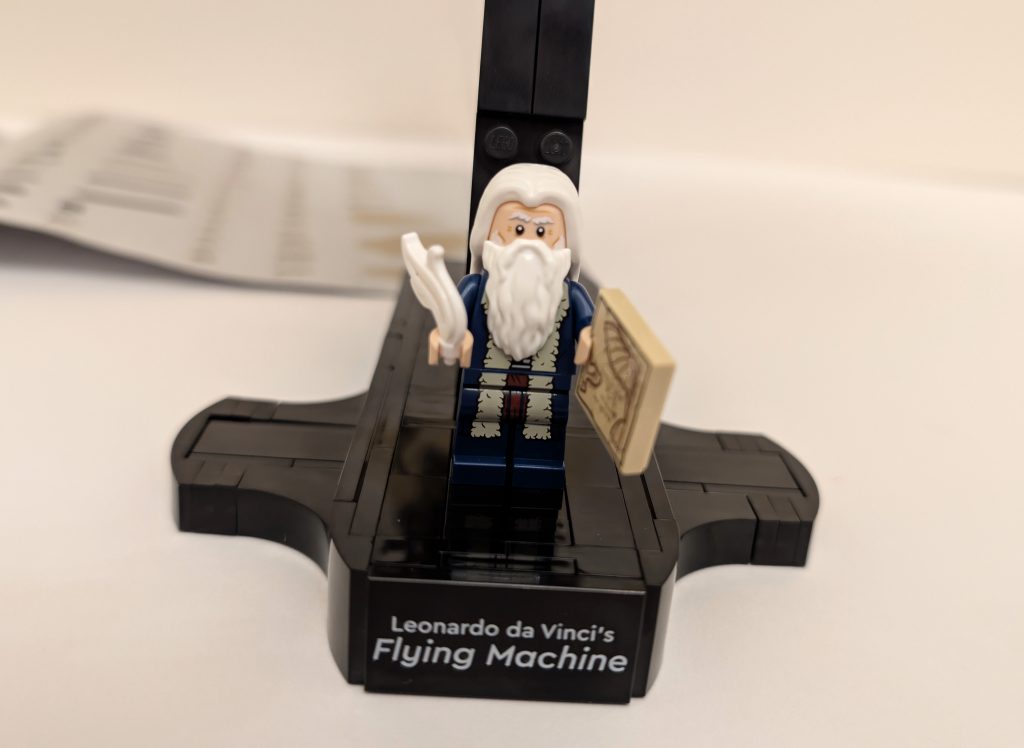
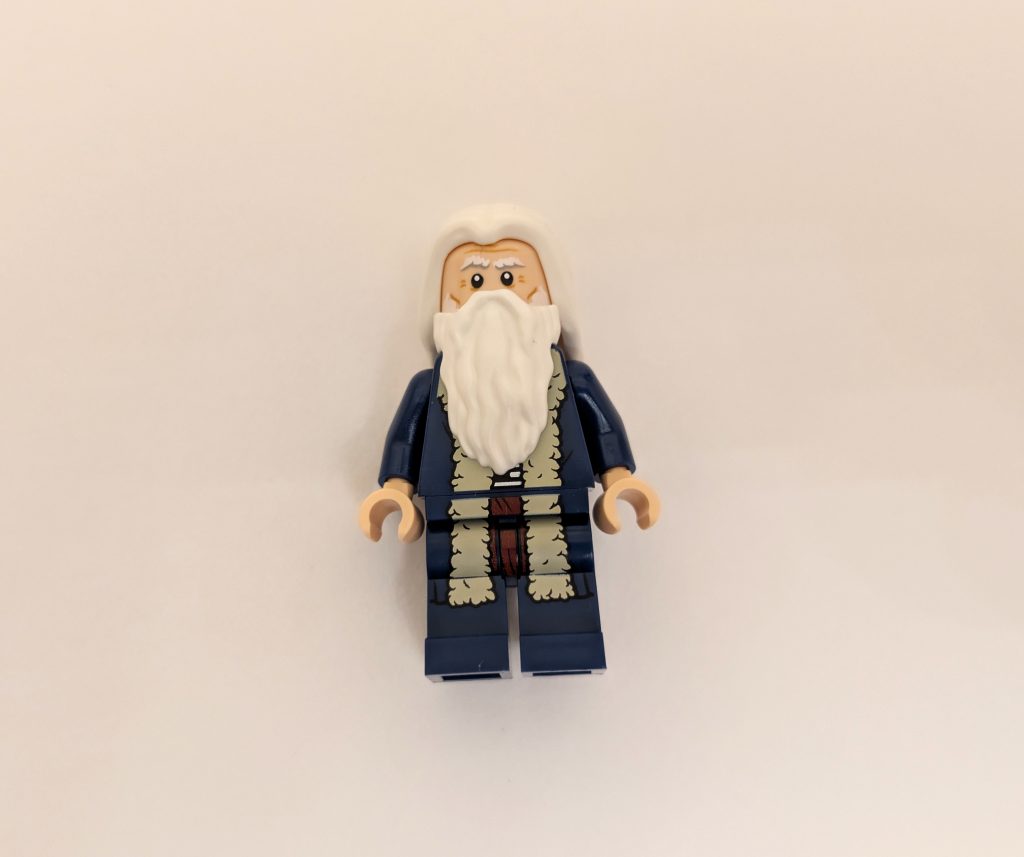
The Finished Build
Despite the low part count, the end result of LEGO Leonardo Da Vinci’s Flying Machine is a really impressive display piece, at a much larger scale than I had originally anticipated. The entire look captures the renaissance period invention in LEGO form perfectly. Da Vinci’s aim in designing his Ornithopter was to emulate the wing-flapping flight of birds, bats and insects, something that has been recreated so wonderfully in this set design.
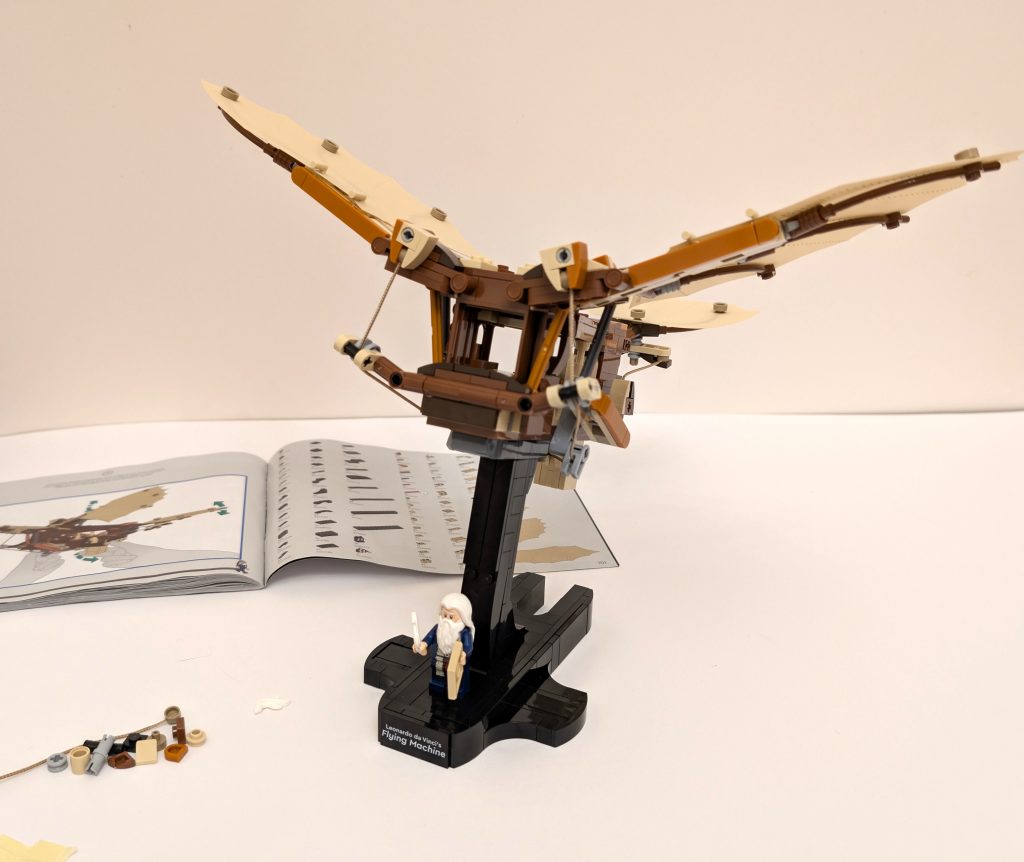
New Parts/Colours
This is teh full list of new parts included in LEGO Leonardo Da Vinci’s Flying Machine:
- 4514: Technic, Link 1 x 6 without Stoppers Perpendicular (Dark Orange). First seen in light bluish grey in the 2024 set 42182: NASA Apollo Lunar Roving Vehicle
- · x127c10pb01: String with End Studs (10L Overall) with (Same Color) Studs Pattern (Dark Tan)
- · x127c40pb01: String with End Studs (40L Overall) with (Same Color) Studs Pattern (Dark Tan)
- · 4042: Bar Curved with Axle 1L and 1 x 1 Round Plate End (Reddish Brown)
- · 85943: Technic, Brick 1 x 2 with Hole and Dual Liftarm Extensions (Reddish Brown)
- · 731c10: Technic, Shock Absorber 6.5L with Tan Piston Rod – Hard Spring, Tight Coils at Ends (Reddish Brown), new with the colour combination.
- · 110630: Tan Cloth Wing 12 1/2 x 11 1/2 Tail with Dark Tan Stitching Pattern
- · 110507: Tan Cloth Wing 19 x 14 1/2 Left with Dark Tan Stitching Pattern
- · 110629: Tan Cloth Wing 19 x 14 1/2 Right with Dark Tan Stitching Pattern
- · 3068pb2563: Tan Tile 2 x 2 with Black Tattered Edge Border, Dark Tan Writing, Dark Red Bird Wing and Flying Machine Blueprint Pattern
- · 87079pb1488: Black Tile 2 x 4 with White ‘Leonardo da Vinci’s Flying Machine’ Pattern
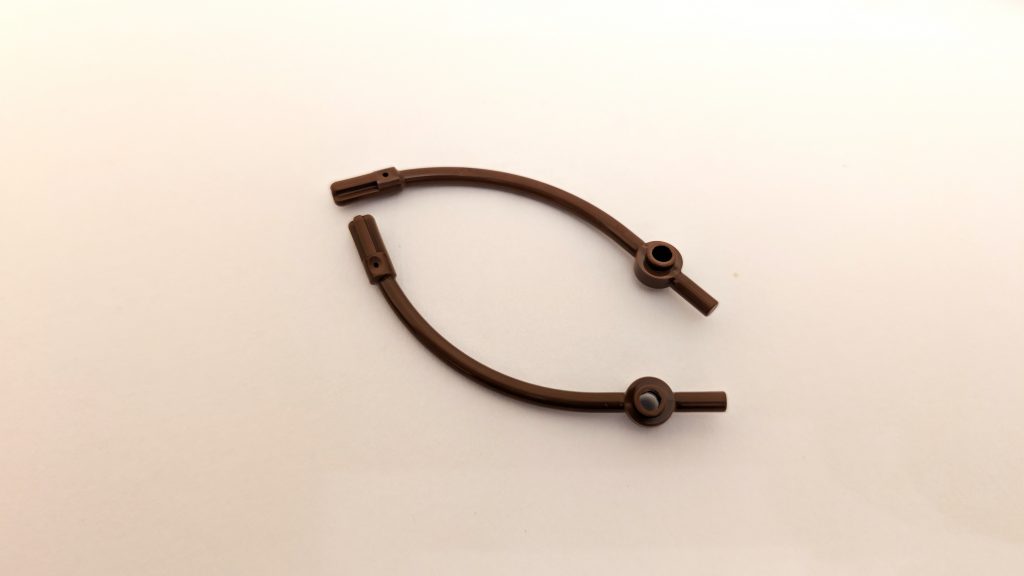
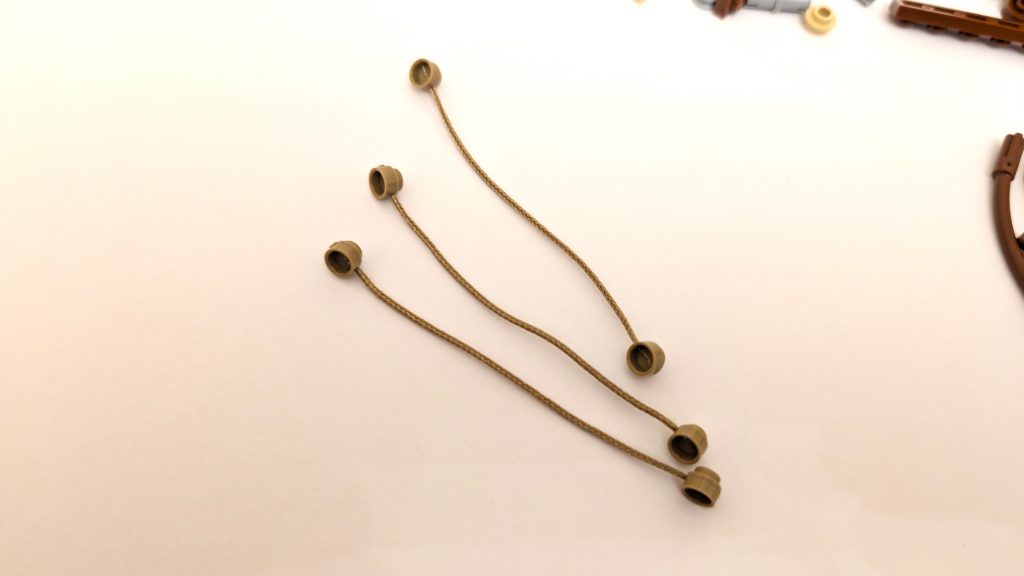

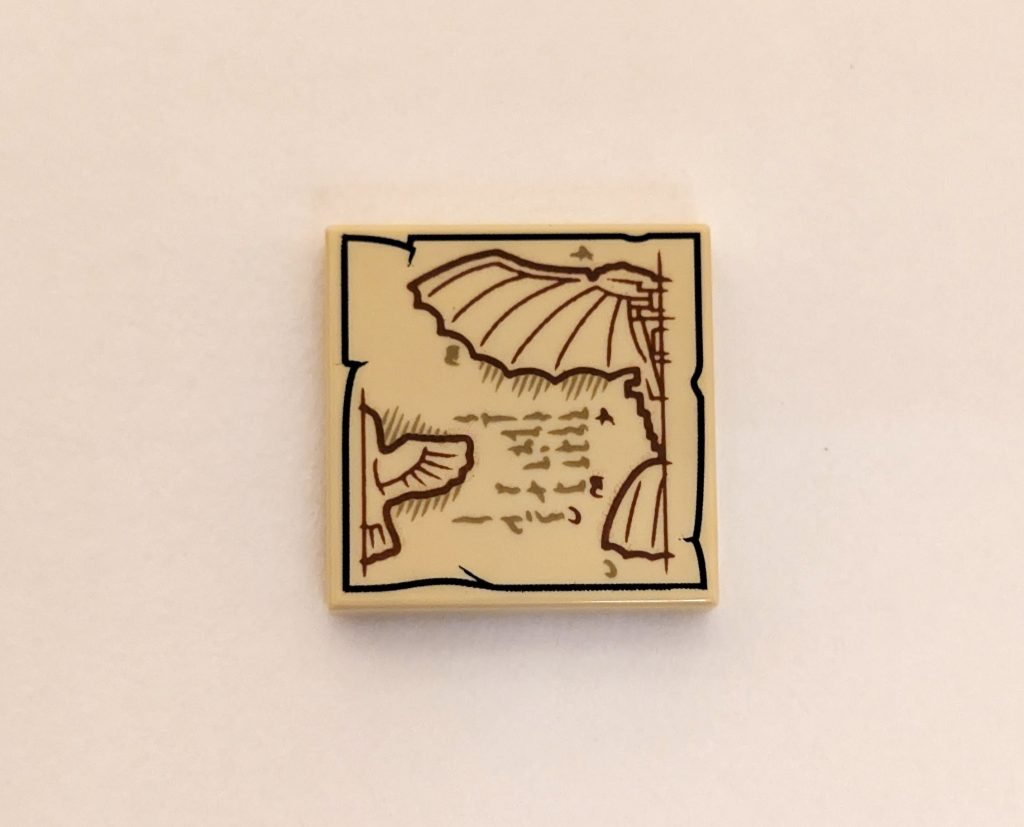
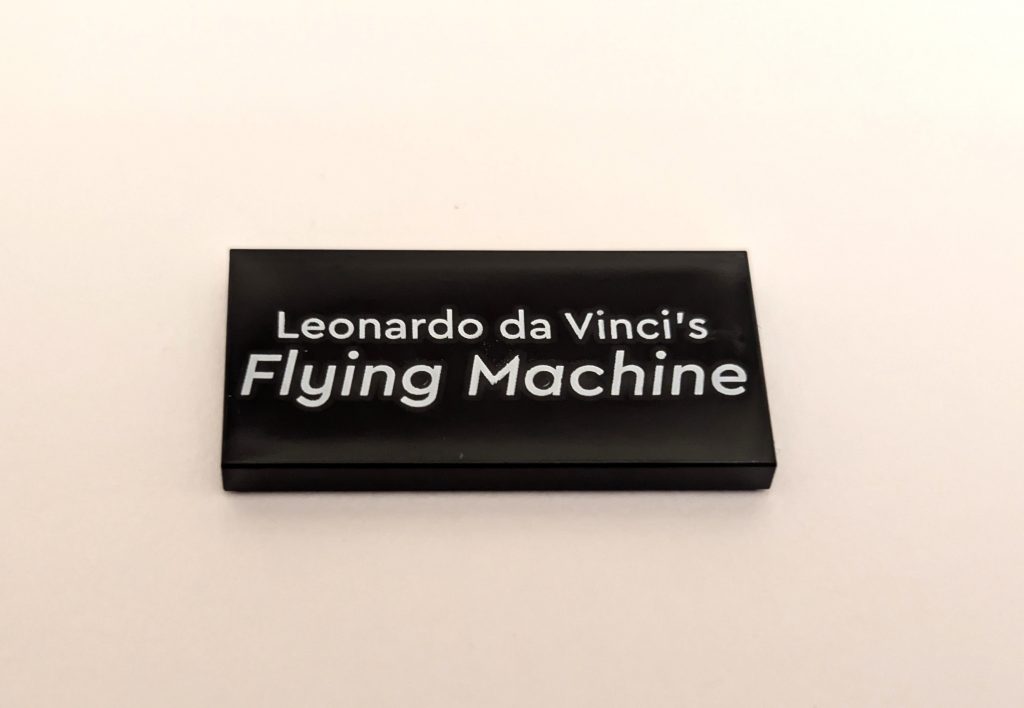
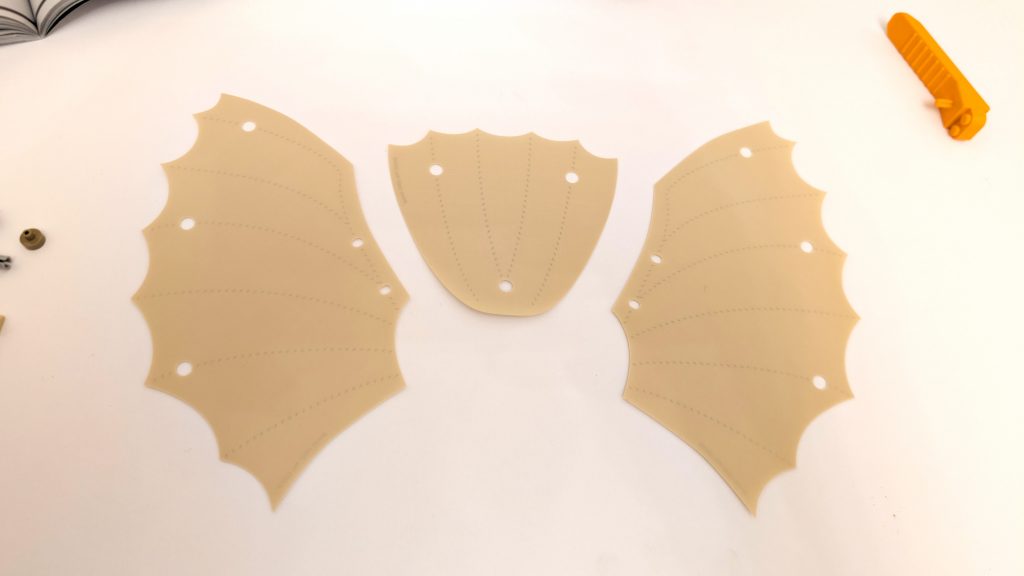
Fun Fact: In 1994, Microsoft owner Bill Gates bought one of Leonardo’s notebooks for a whopping $30.8million, making it the most expensive book ever sold!
Conclusion
If you are looking for a reasonably priced LEGO set that will provide an enjoyable building experience and a beautiful display piece, I would recommend few sets more than LEGO Icons 10363: Leonardo da Vinci’s Flying Machine. Don’t let the high price per piece put you off, this set offers great value.
Build
LEGO Leonardo Da Vinci’s Flying Machine was enjoyable from start to finish, with only one minor accident with the shock absorber flying across the room.

Minifigures
I like the new face, torso and leg prints for Leonardo, but would also have liked to see a new beard and hair to make this Minifigure truly unique.

Part Usage
With the exception of some unnecessary part splitting where a single piece would have sufficed, the parts and techniques used to create LEGO Leonardo da Vinci’s Flying Machine are on point. Even with the minor gripe, it is hard not to award full marks.

Value
At first glance, LEGO Leonardo da Vinci’s Flying Machine seems to be an expensive set, however the unique parts, moving mechanism and finished look are worth the price.

What do you think of LEGO Leonardo da Vinci’s Flying Machine 10363? Do you think any of the new releases for February 2025 will be a better build? Let us know in the comments!










